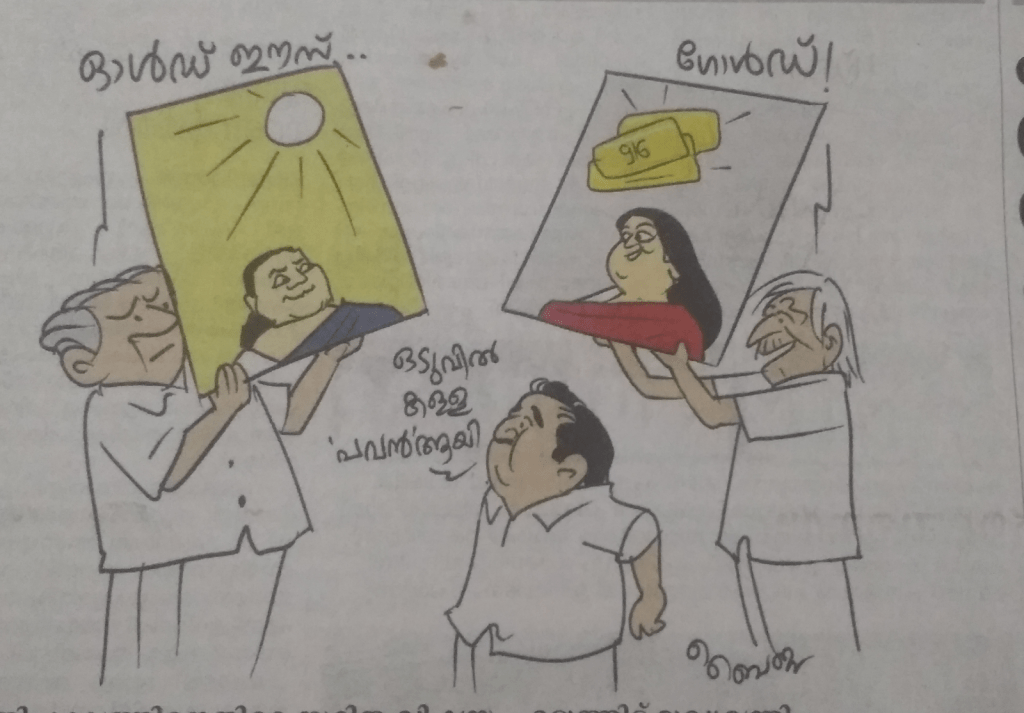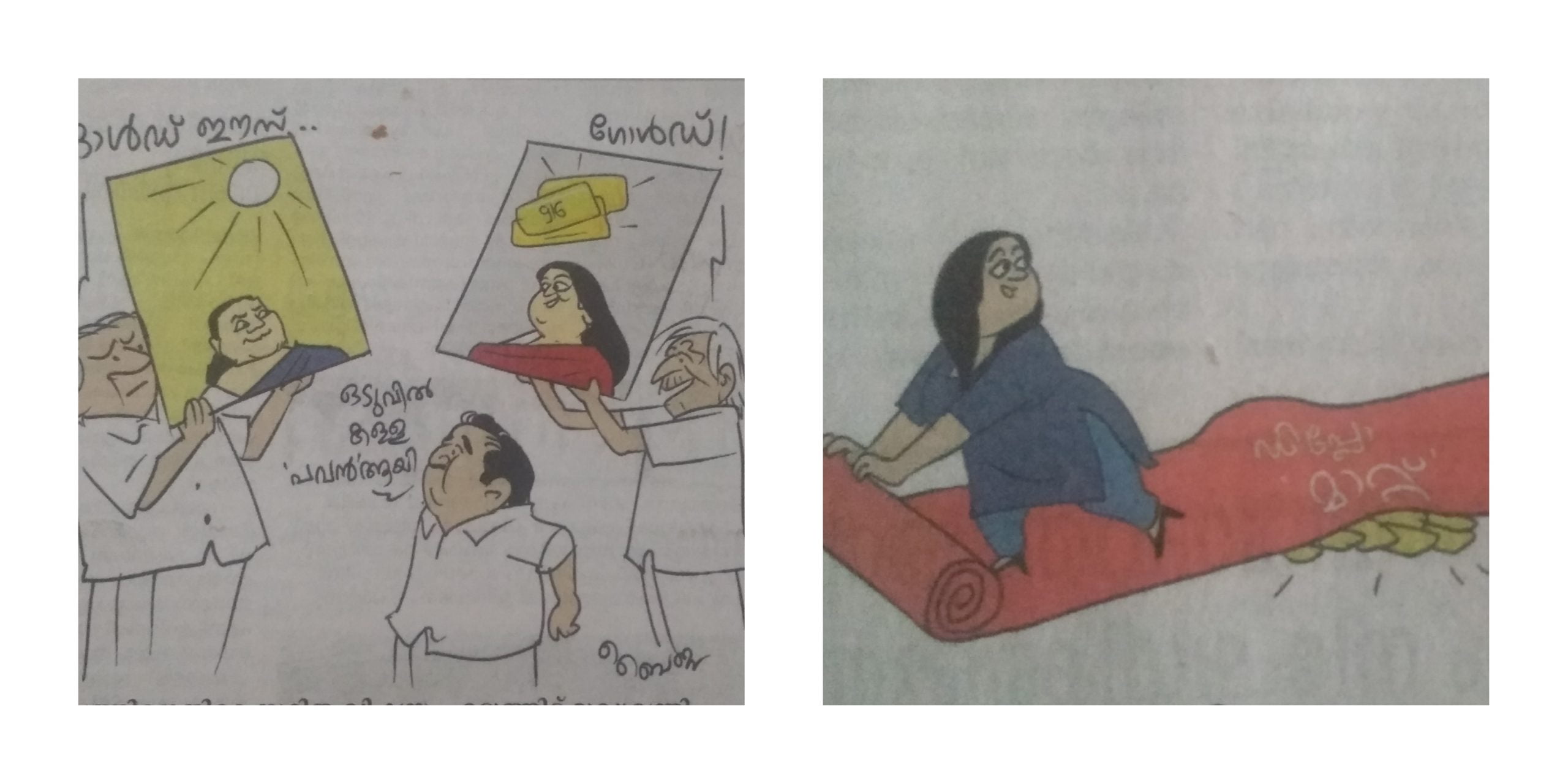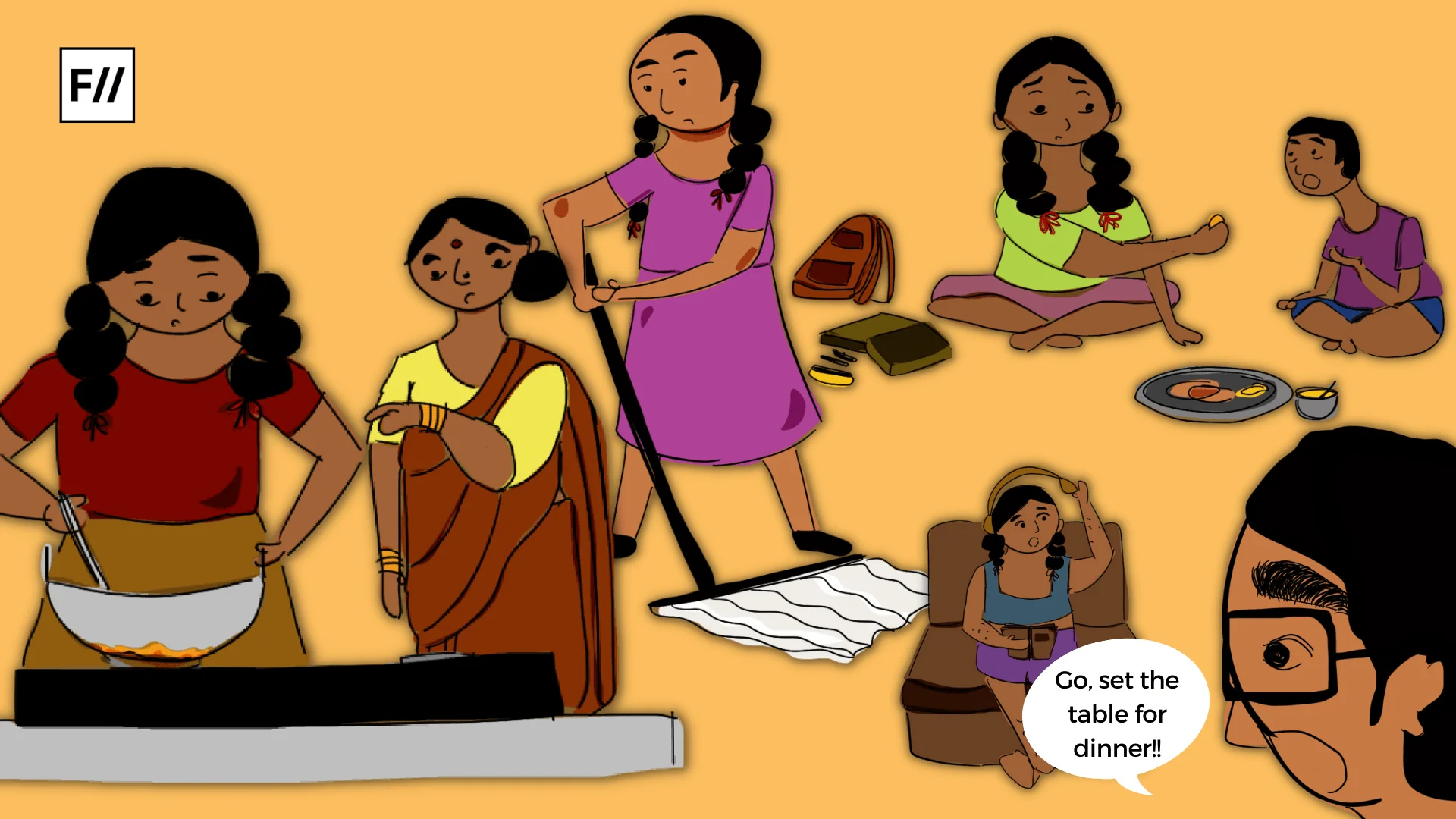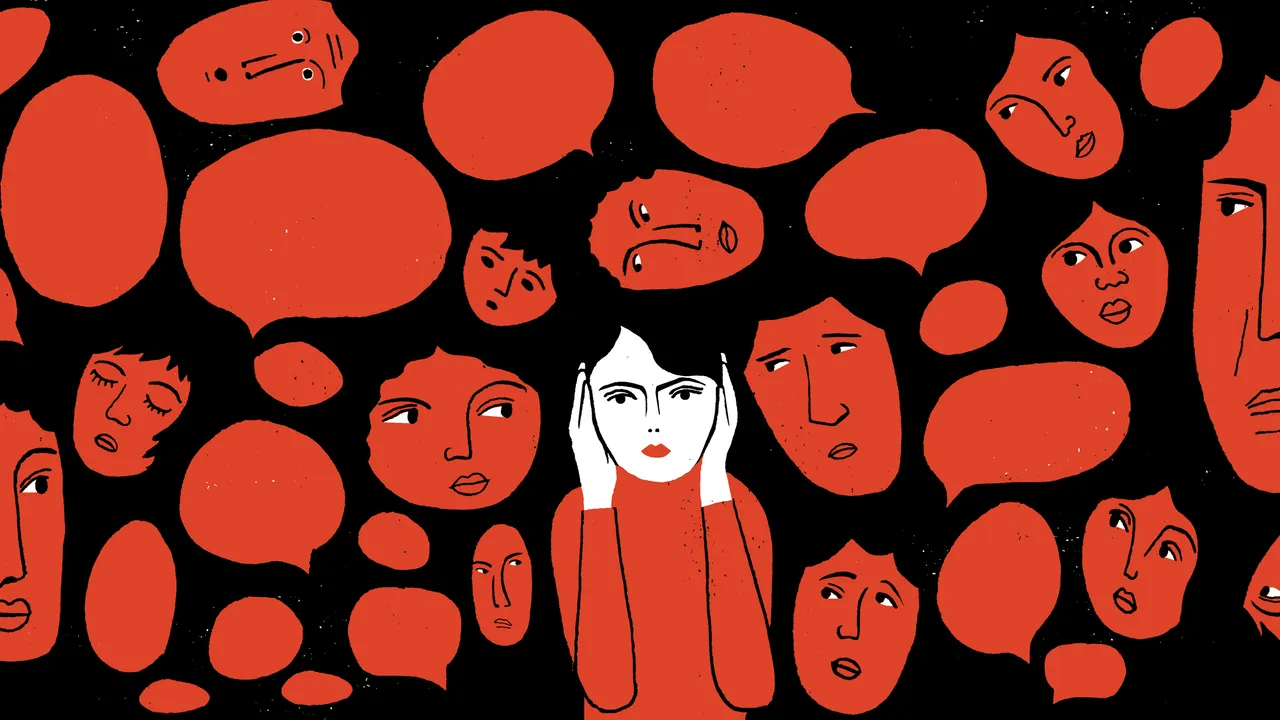Editor’s Note: This month, that is July 2020, FII’s #MoodOfTheMonth is Feminism And Body Image, where we invite various articles about the diverse range of experiences which we often confront, with respect to our bodies in private or public spaces, or both. If you’d like to share your article, email us at pragya@feminisminindia.com.
Women’s bodies, their sexuality and womanhood have always been demanded to be subservient. Women, for centuries, have lived lives of docility until feminists dismantled this subjugated livelihood. Feminists viewed the bodily construction from a man’s and woman’s perspective. The subjugated livelihood of a woman is completely controlled by patriarchy. The images of the body constructed by the androcentric society are deeply embedded in patriarchy. In the Indian society, girls from a very young age are taught to be docile, passive and feminine. Women are always criticised for their actions because patriarchy finds women’s bodies as carriers of honour and pride of the household and the man in power.
Any kind of conduct affecting the honour of the household is deemed as a fault of the woman. Sabala & Gopal studied that,
“Women are glorified by ideal images of goddesses; honour of nation/family/community and sometimes the same body is projected as shameful, vexatious, fearful and disgusting. Women have constantly struggled to maintain this ideal body and project themselves as good women or have been afraid to confront the negative aspects of being portrayed as bad women. Through this arises a distorted picture of how we view our bodies.“
In the universe of cartoon culture of Kerala, women are represented in a hyper-sexualised fashion. We often see them in a style completely unrealistic from the anatomical perspective, allowing the viewer to ogle at the same time. The universe is designed for a heterosexual male gaze leading to women themselves normalising objectification. Women’s bodies are painted in a depersonalised technique.
In the universe of cartoon culture of Kerala, women are represented in a hyper-sexualised fashion. We often see them in a style completely unrealistic from the anatomical perspective, allowing the viewer to ogle at the same time. The universe is designed for a heterosexual male gaze leading to women themselves normalising objectification. Women’s bodies are painted in a depersonalised technique.
Kerala’s old art form of cartoon is an epitome of political satire and social humour that still holds power even in the age of social media’s meme culture. It is inherently an art of ridicule rather than an art of free thinking or even an expression of dissent/indignation. These caricatures or cartoons are sections devoted to the daily newspaper to grab the reader’s eye. The readers, men and women, who are/have been patriarchal on seeing such representation of women and are attracted by the art, defy/ridicule their (women’s) existence; or maybe individuals even revolt against such representation, but the paucity of voices makes the effort futile.
Also read: Here Is A Cartoon That Thanks Women Who Fought For Us
Therefore, the large number of readership of men and women become bearers of this patriarchal practice, encouraging the culture of wrongly caricaturing women. Such graphic representation of women reeks of misogyny and stereotypes depicting the male gaze. For centuries, cartoons of women or any form of political satire depicting women have witnessed a particular way of caricaturing them, which is often sexualised. This archetype of hypersexual woman still continues to be portrayed in comics and newspapers.
The current case of gold smuggling in Kerala has introduced another set of sexist imagery of a woman. Swapna, the prime suspect of the case is on trial by the panel of misogynistic men—politicians, cartoonists, reporters etc. Cartoons of Swapna in Malayala Manorama (a popular media company in Kerala) paint the voluptuous imagery of male gaze. The misogynistic response to a woman accused is shameful for she has become the ‘bad woman’ of the society.
The current case of gold smuggling in Kerala has introduced another set of sexist imagery of a woman. Swapna, the prime suspect of the case is on trial by the panel of misogynistic men—politicians, cartoonists, reporters etc. Cartoons of Swapna in Malayala Manorama (a popular media company in Kerala) paint the voluptuous imagery of male gaze. The misogynistic response to a woman accused is shameful for she has become the ‘bad woman’ of the society.

Another such case of the same heat occurred almost 5 years ago, when Kerala was under the leadership of UDF. Sarita Nair was accused in the solar panel scam case. Both women who were prime suspects of these cases had been scrutinised by men for going against the societal expectation of a woman, as they carry the honour of the community and of all women folk. Readers of the paper have witnessed a revival of cartoons of both women.

Media has become a platform to enforce political agendas; it has transitioned into a fight between parties where these women have been thrown as objects of blame. A varied form of objectification has taken form where politicians, artists of political satire and even reporters are tossing women into the tiff between men and their projection of masculinity.
Also read: The Cartoons Of Mario Miranda And The Art of Sexist Nostalgia
Therefore, these women are objects owned by each party, belted close to them only to unleash when needed. The problematic imagery of women as objects and the sexualised depiction of them in the media directs one to the idea of male gaze. Therefore, Swapna and Sarita are commodities, corporeal objects for the use of men to fulfill their needs, revealing the politics of their (men) minds.
References
Krupa is a student of M.A Gender Studies at Jamia Millia Islamia. She is completely determined to discover and write about women’s life experiences. The golden well wish of her life is, ” to not let patriarchy steal my sanity”. She loves to write on women domestic workers, and anything that gives perspective on how to decentralise our gendered society. She finds peace in dark gloomy days, perfect enough to read or write and cook anything ranging from Kerala Sadhya to Italian pasta with a strong coffee on the side. The famous lines by Freddy Mercury, “Don’t stop me now, I’m having such a good time, I’m having a ball…” is what lets her rule her world. You can find her on Facebook, Twitter and Instagram.




